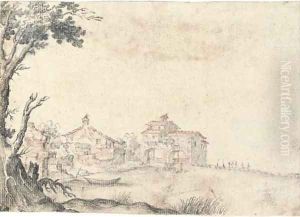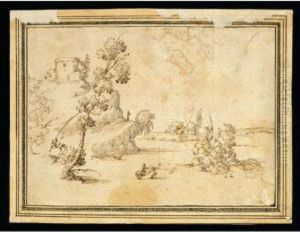Alfonso The Younger Parigi Paintings
Alfonso the Younger Parigi was an Italian architect and stage designer, born in 1606 in Florence, Italy. He was part of a prominent family of architects and scenographers that significantly influenced the Baroque style in architecture and theater design in Italy. His father, Giulio Parigi, was a well-known architect and designer, under whom Alfonso initially trained, ensuring a legacy of creativity and innovation in the arts within the family.
Alfonso's contributions to architecture and stage design were notable during the early to mid-17th century, a period that saw the flourishing of Baroque art and architecture, characterized by dramatic expressions, intricate details, and an emphasis on movement and tension in design elements. He worked extensively for the Medici court in Florence, where he was involved in the design and execution of various architectural projects and theatrical productions. His work for the Medici included designing sets for court festivities, operas, and ballets, which were grand spectacles meant to display the power and cultural sophistication of the Medici dynasty.
One of Alfonso's most significant contributions was in the field of stage design, where he utilized innovative techniques such as changing scenery and complex machinery to create dynamic and visually stunning theatrical experiences. His designs often featured elaborate architectural perspectives and were instrumental in the evolution of scenic design, influencing the development of Baroque theater across Europe.
Despite his achievements, detailed records of Alfonso the Younger Parigi's architectural works are scarce, and much of his contributions are overshadowed by those of his contemporaries and family members. However, his work in stage design remains a critical area of study for historians of theater and Baroque art. Alfonso the Younger Parigi died in 1656 in Florence, leaving behind a legacy marked by innovation in theatrical design and a contribution to the evolution of Baroque aesthetics.


